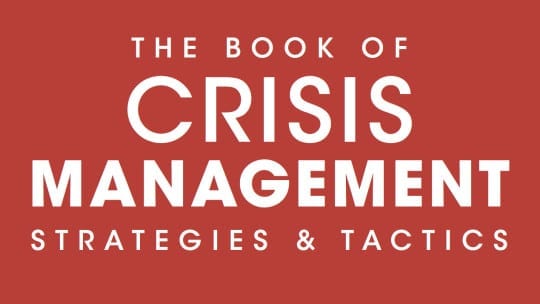
In times of stress, one's judgment is impaired, no matter how cool the head might seem. This holds true for both individuals and organizations in crisis mode, and the temptation to act out on social media can be too great for some. The best defense is a smart, succinct crisis plan that can be shared throughout an organization.
In this excerpt from PR News' Book of Crisis Management Strategies & Tactics, Vol. 8, Ann Marie van den Hurk, principal of Mind The Gap Public Relations, lists six recommendations for integrating social media into every crisis scenario your brand or client might face.
- Criticism: Do not censor criticism on your blog, Facebook account or YouTube channel unless it violates your stated community guidelines. This is a difficult concept for organizations to get accustomed to in the age of social media. Removing the offending comments may lead to more, harsher comments.
- Tone: Social media is not the space for corporate tone. When responding, be personal, polite and professional. Never respond in a dismissive or impolite manner. It will only add fuel to the fire.
Is your crisis plan up to date? Is your crisis team ready to mobilize and craft a message in the first hour of a crisis? Do you even have a crisis team? If you answered no to any of these questions then be sure to register for PR News' Crisis Management Boot Camp, which will be held Feb. 23, 2017, in Huntington Beach, CA.
- Order: Many organizations are afraid to stand up for themselves on social media. It’s OK to bring order to the organization’s online space, which will allow for concerns to be addressed.
- Listen: Listen to and try to understand what the negative commenter wants. Respond directly to the person, when possible. Respond publicly and have an open conversation or acknowledge the concern and then take it offline. How an organization handles a particular situation depends on the factors involved.
- Channel: Different social media channels have unique tones because they target different audiences. Each channel needs to communicate the same message, but that message needs to conform to the style of a particular channel. What works in a media release, on a website or in a brochure will not necessarily work on Twitter or Facebook.
- Update: Websites and social media platforms need to be updated 24/7. During a crisis, people will be expecting current information. They will be expecting interaction on social media platforms.
This article was adapted from PR News' Book of Crisis Management Strategies & Tactics, Vol. 8, which is available in digital and print formats.
Follow Steve Goldstein: @SGoldsteinAI
